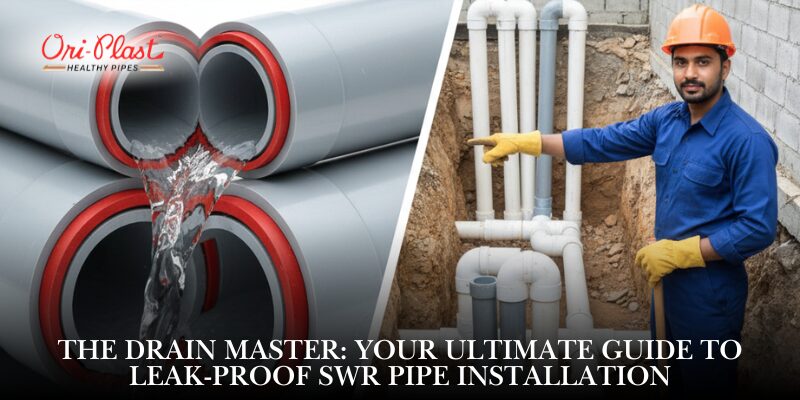Setting up the plumbing system in a building is like creating the veins and arteries of a living organism. In this intricate network, SWR (Soil, Waste, and Rainwater) pipes play a crucial role. However, the installation process can be prone to mistakes that might lead to plumbing issues down the line. Let's delve into some common pitfalls to avoid when installing SWR pipes in your building, ensuring a robust and trouble-free plumbing infrastructure.
Related Read: SWR Pipes - Everything You Should Know About in 2023Incorrect Slope and Alignment:
- One of the cardinal errors is neglecting the proper slope and alignment of SWR pipes. These pipes rely on gravity to carry waste and rainwater away. Failing to maintain the correct slope can result in water pooling, leading to blockages and unpleasant odors. Ensure that pipes are installed with the recommended slope for efficient drainage.
Poor Joint Sealing:
- Effective sealing of joints is paramount in preventing leaks. Neglecting this step or using substandard sealing materials can result in water seepage, compromising the structural integrity of the building and fostering conditions for mold and mildew growth. Always use recommended sealing materials and follow manufacturer guidelines meticulously.
Inadequate Ventilation:
- SWR systems require proper ventilation to prevent the buildup of sewer gases and maintain the system's efficiency. Failing to install adequate vent pipes can lead to foul odors, slow drainage, and even trap siphonage. Ensure that vent pipes are correctly positioned and follow the guidelines for the number and placement of vents.
Mismatched Pipe Material:
- Mixing different materials for SWR pipes, fittings, and joints can be a recipe for disaster. Different materials expand and contract at varying rates, leading to leaks and system failures over time. Stick to compatible materials specified by the manufacturer to ensure a cohesive and durable plumbing system.
Ignoring Building Codes and Regulations:
- Plumbing codes and regulations exist for a reason – to ensure the safety and functionality of plumbing systems. Neglecting these guidelines can result in legal issues and suboptimal performance. Always adhere to local building codes and regulations when installing SWR pipes, and consider consulting with a professional if needed.
Inadequate Support and Anchoring:
- SWR pipes need proper support to withstand the weight of water and waste flowing through them. Failing to adequately anchor and support the pipes can lead to sagging, misalignment, and potential damage. Follow manufacturer recommendations for supports and anchors to ensure the longevity of the plumbing system.
Improper Cutting and Fitting:
- Precision is key when cutting and fitting SWR pipes. Poorly cut pipes or improper fittings can lead to leaks, blockages, and overall inefficiency. Invest in quality cutting tools and ensure that fittings are secure and in line with the manufacturer's specifications.
Conclusion:
Installing SWR pipes in a building demands meticulous attention to detail to avoid future plumbing nightmares. By steering clear of these common mistakes, you can ensure a robust and reliable plumbing system that stands the test of time. Remember, a well-installed SWR system not only enhances the functionality of your building but also contributes to the health and well-being of its occupants.




